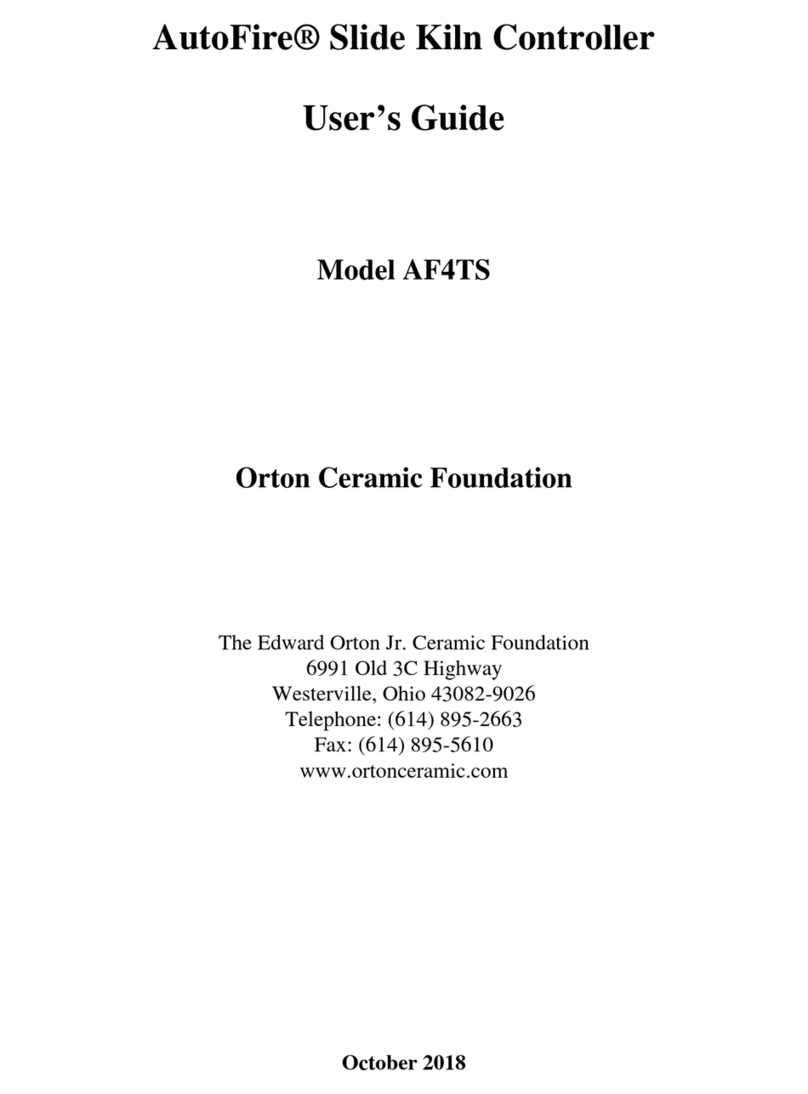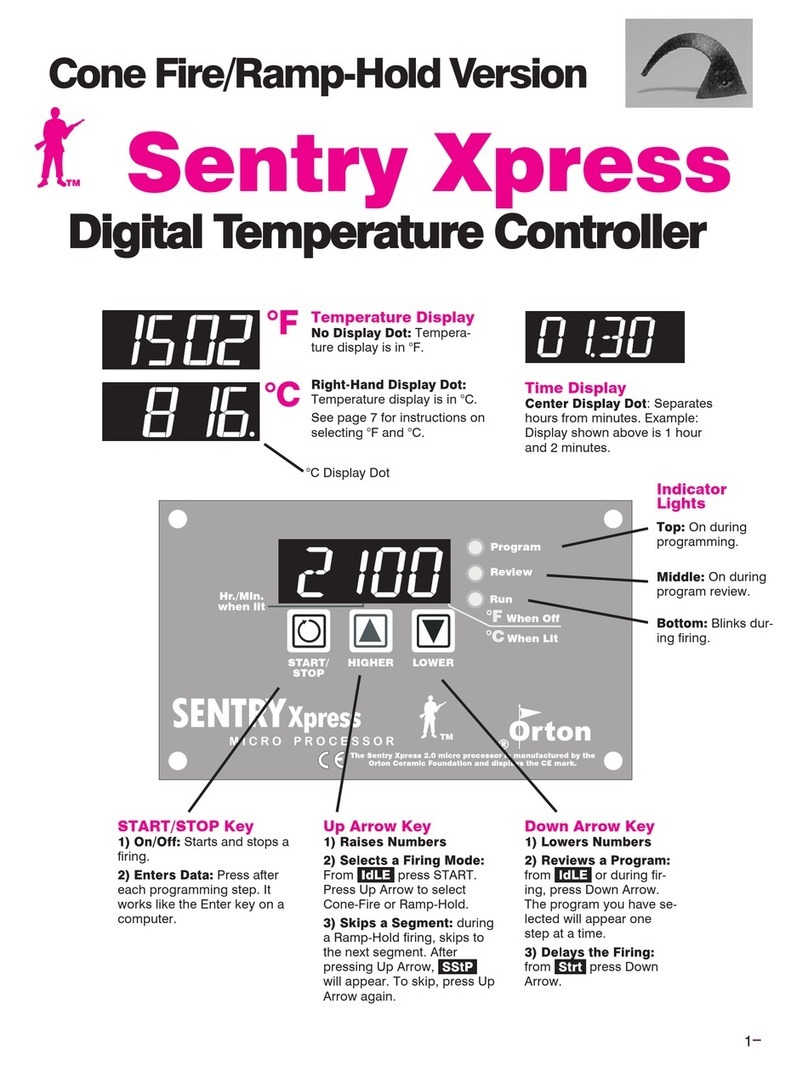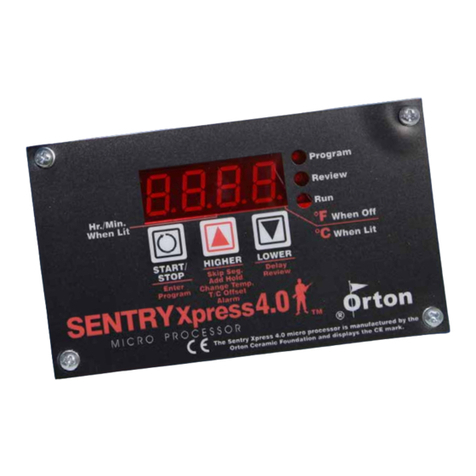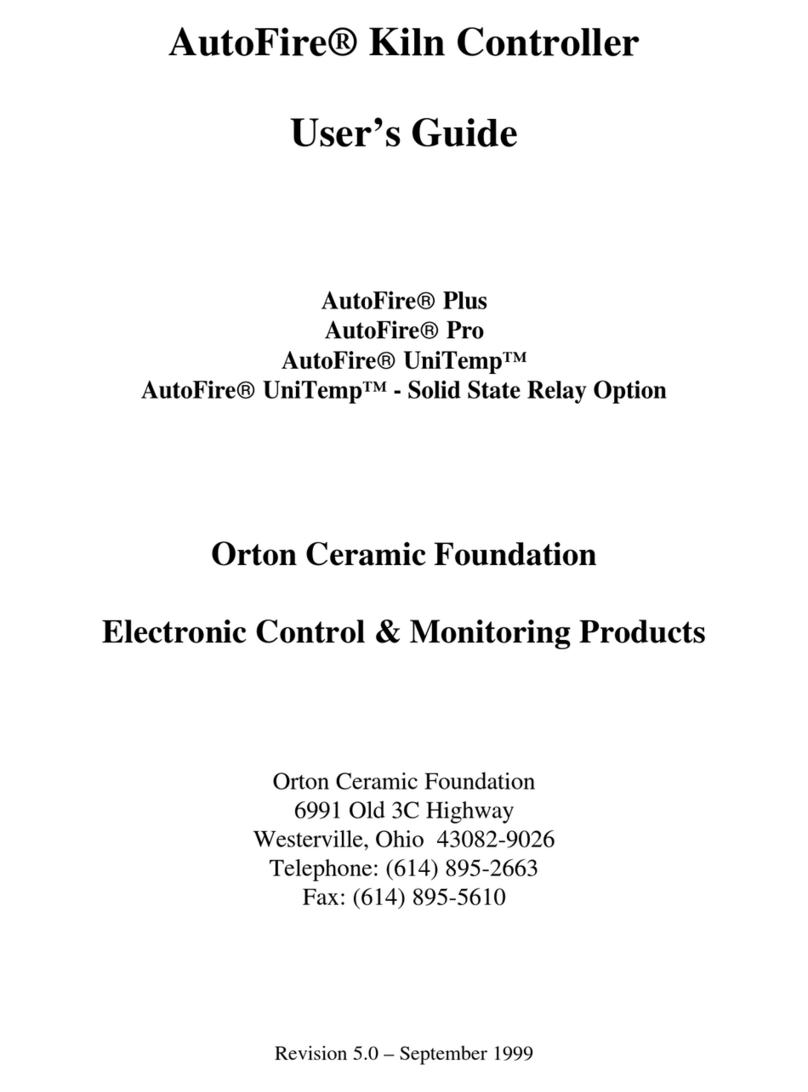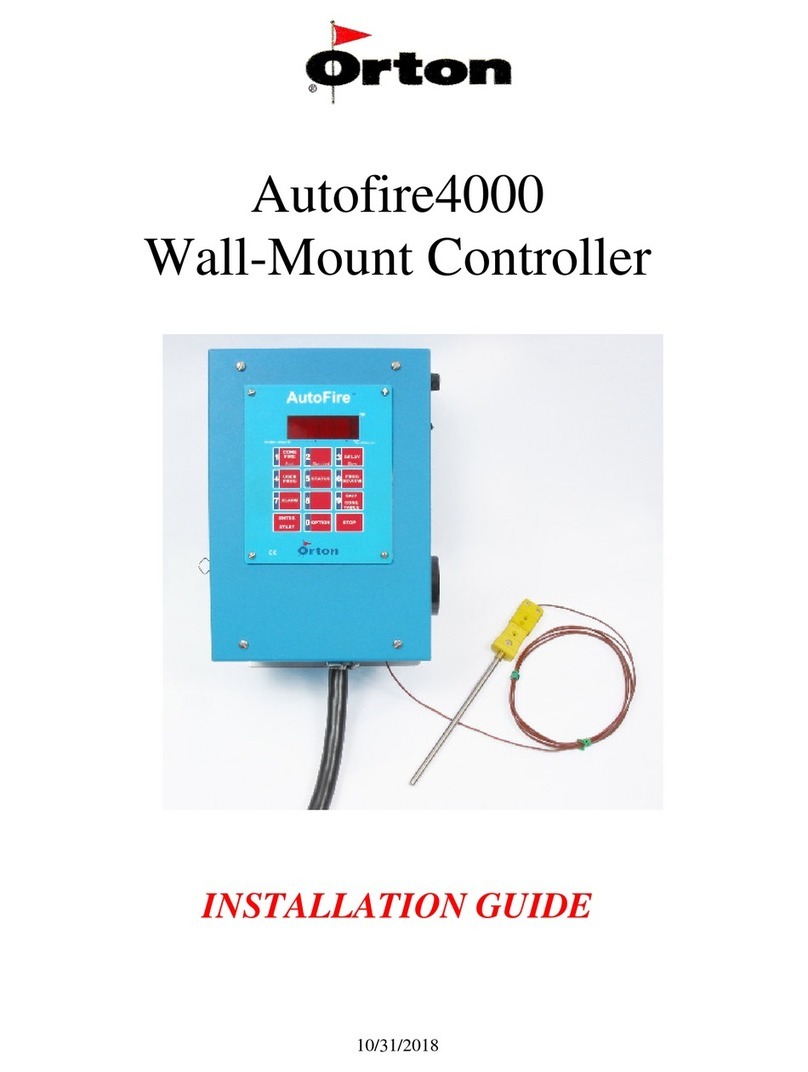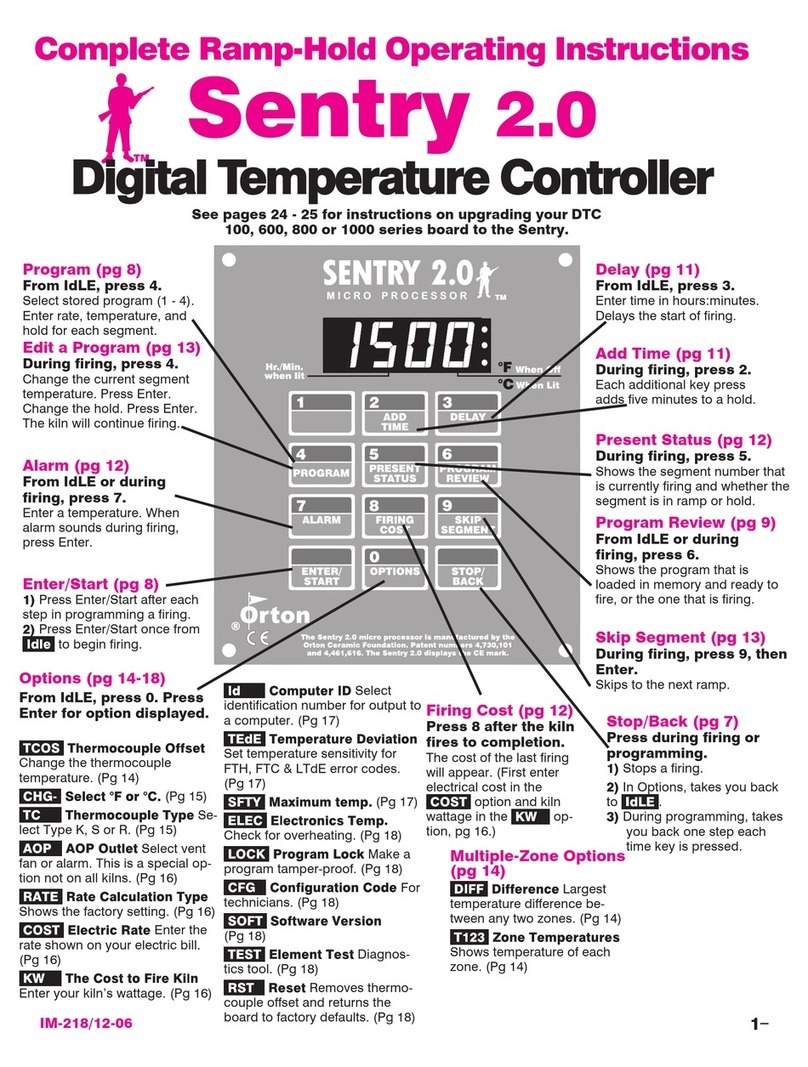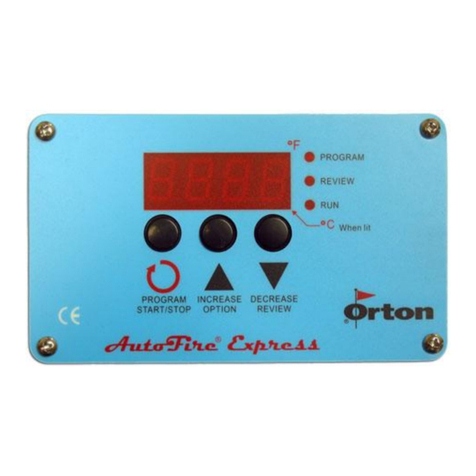Programming Hold Time
Each step of a firing program can have an optional Hold time. Hold time is
the amount of time you want to stay at the previously determined heating or
cooling temperature. Hold time is also referred to as Soak or Dwell time.
Hold Time is entered in Hours & Minutes format. The middle decimal point
light on the controller display is used to separate Hours from Minutes. For
Example, A 1 hour hold time should be set like [01.00], while a 1 hour and
30 minute hold time would be [01.30]. If no hold time is desired, the setting
should be [00.00]
A special Hold time is available for indefinite Hold periods. If it is desired to
hold the program temperature until someone manual stops the firing or
manually advances the program, a hold time of [99.59] represents
indefinite Hold.
The value range available for setting Hold time is 00.00 to 99.58.
During a firing, the hold time begins as soon as the temperature reaches the
heating or cooling temperature. As the hold time progresses, the controller
display will count-down the remaining time until the hold time has expired.
During programming the display prompts for all Hold settings is HLd
followed by the step number like HLd1, HLd2, HLd3, etc…
Other Programming Notes
After a firing program is set in the controller, the values will not change or
be lost when the controller is turned off.
It is not possible to back-up in the programming mode. If a mistake is made
while programming a previous step, you must start over from the IdLE mode
to make corrections.
If no buttons are pressed for 1 full minute during programming, the controller
will automatically exit the program mode and return to the IdLE display.
During a firing, if the options menu is activated for programming, the controller
will return to the active display if no buttons are pressed for 1 full minute.
Delay Start Option
Prior to the active start of any firing, the controller display will show a Start
prompt of Strt. This appears after the firing program selection and
programming. If a delay start time is desired, press the Decrease/Review
button to activate a delay start prompt. The display will show dELA
alternating with the adjustable delay time in Hours & Minutes format. Use the
Increase/Decrease buttons to set the Delay time and then press the Program
button to return to the Strt prompt. When you are ready to begin the delay
period, press the Program button again.
Delay time counts-down on the controller display before the actual start of the
firing. When the delay time expires, the actual firing program begins
automatically. The Delay time has a setting range of 00.00 (no delay) to
99.59 (99 hours. 59Minutes)
4
the wiring for the thermocouple and the physical condition of the probe
inside the firing chamber.
FtL -This alarm indicates that the firing was taking too much time to complete
and the firing was terminated. The controller monitors the deviation from the
desired firing schedule as compared with the actual firing results. There are 2
conditions for the FTL alarm.
1. The heating or cooling rate is slower than 27°F (15°C) per Hour
2. The current program step has lasted 2 hours longer
than anticipated.
In most cases, the FTL alarm occurs during heating if the heating rate is set
to a fast speed that cannot be maintained by the kiln. If the heating rate is
within the systems capability, a component failure has probably occurred with
the heating elements or the heater relays.
During cool-down, a well insulated system will have cooling limitation and
rapid cooling rates may set off this alarm if the cooling speed cannot be
maintained. Increasing the final cool-down temperature or slowing the
programmed cooling rate can avoid this alarm.
tCL -This alarm indicates that the thermocouple signal is not responding to the
demand for more system power during heat-up. There are 3 conditions for the tCL
alarm.
1. The heating rate is slower than 9°F (5°C) per Hour
2. The actual kiln temperature is lagging behind the desired
setpoint temperature by more than 100ºF (56ºC).
3. The actual temperature is less than 500ºF (260ºC)
In all cases, the tCL alarm occurs during heating when little temperature rise
is detected. This can be the result of a component failure; most likely a failed
heating elements or a heater relay. Another possible problem is with the
thermocouple sensor signal; if the thermocouple probe is not properly
positioned in the firing chamber or if the wiring from the thermocouple has
short -circuited the controller will not detect actual temperature changes in
the firing chamber.
EtH -This alarm indicates that the Electronics temperature is too hot for
controller operation. The controller temperature must be below176ºF (80ºC) to
prevent damage to the electronic components. The ETH alarm cannot be cleared
unless the board temperature has cooled. If the ETH occurs frequently, check the
kiln for heat loss near the controller. Proper venting and heat-shielding should be
inspected.
HtdE -The High Temperature deviation alarm sounds an audible alarm and
terminates the firing if the actual kiln temperature is above the controller set-point
by 56ºC (100ºF). This alarm is active only when the actual kiln temperature is
above 500ºF (260ºC)
9
